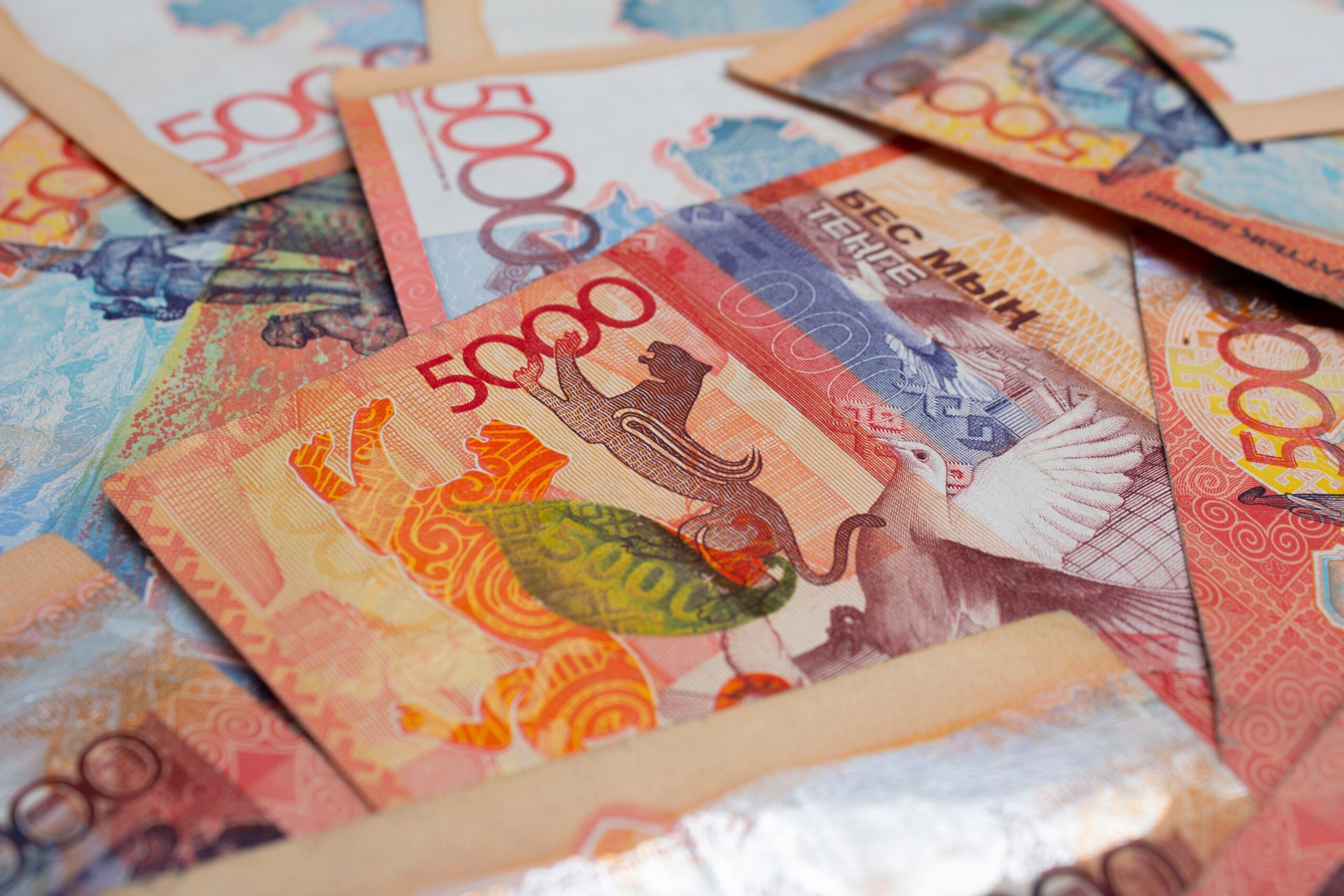Thirty years ago, on Nov. 15, 1993, 16 million Kazakh people woke up to a radically new reality — Kazakhstan had introduced the tenge, its new national currency.

Photo credit: Shutterstock.
Tenge is a word drawn from Kazakhstan’s nomadic past, an era in which the Kypchak tribes used coins named “tanga.” Prior to launching the new currency, Kazakhstan, despite being a sovereign state, was not independent from Russia in its monetary policies. Stuck in the “ruble zone,” Kazakhstan was dependent on Moscow’s central bankers. The country was unable to control currency circulation. It was powerless to fight against rapidly accelerating inflation and the destabilization of the entire Kazakh financial system.

Assel Nussupova.
Despite this dependency on Russia’s monetary policies, the Kazakh leadership still tried to hang on the ruble. Even the decision by Russian authorities to withdraw Soviet rubles from circulation in July 1993 was not enough to convince Kazakhstan and several other former Soviet republics that it was time for them to take their destiny into their own hands and start printing their own money.
Even after Russia’s withdrawal of the Soviet ruble, the Kazakh leadership aimed to keep the country in the ruble zone. There were several intergovernmental agreements signed in August and September of 1993 to maintain using the ruble in Kazakhstan and some former Soviet Union republics. This push to stay ruble-dependent in Kazakhstan was fueled mostly by the fact that the country’s industrial production and trade were still largely linked to Russia, and transactions between the countries were carried out in rubles.
Eventually, however, Kazakhstan had to face a harsh reality. The monetary collapse of the old Soviet Union and changes in Russian policy resulted in a country that had two types of currency circulating in the economy. Kazakhstan was using both old Soviet rubles bearing the portrait of Lenin and the newly launched Russian rubles. The old Soviet rubles were used for transactions with the former Soviet republics that still had not launched their own national currencies.
Even with Kazakhstan’s desire to maintain the usage of the ruble, the country did not find the needed support from the Russian leadership to keep the ruble economically viable. Other republics decided that it was better not to depend on Russia in the field of currency. The Kyrgyz Republic introduced its national currency in May of 1993. Estonia followed in June of 1993. Then, Ukraine and Latvia produced “coupons” as temporary substitutes for the Soviet ruble. Azerbaijan added more complexity to the already chaotic situation by launching its national currency while still keeping the ruble. Uzbekistan took a similar approach, with a different type of currency trading at the same time as the Soviet ruble. In October of 1993, Lithuania removed the ruble from circulation, introducing some alternative forms of payment. Belarus and Moldova also produced alternative forms of currency.
Kazakhstan, in trying to retain both the old Soviet rubles and the newly issued Russian rubles as equally legitimate forms of payment, found itself in a very difficult situation. The country was flooded with old rubles from other Soviet republics and the inflation rates soared. Expectations that there would be a new currency in Kazakhstan and rumors about its development also “aided” in the spreading of black market operations, barter trade, and the creation of a huge deficit in consumer goods. According to the International Monetary Fund (IMF), in October 1993, the exchange rate between old and new rubles reached a ratio of 5 to 1. By the end of October, when the hopes of maintaining the ruble grew slim, the confidence in the old money collapsed — the exchange rate of the ruble fell from 2,700 to 7,000 or even 10,000 rubles per one U.S. dollar.
In this challenging environment, barter trade became the norm. According to the IMF, during this period, one third of Kazakh exports traded through barter exchange, because Kazakhstan did not have a functional currency that could be used in trade transactions.
Problematically, Kazakhstan faced high inflation: for the first seven months of 1993, IMF data shows an average monthly inflation rate of 25 percent, and for the August-November period it reached 38 percent.
As currency woes played out in public, behind the scenes, Nursultan Nazarbayev, the Kazakh President at the time, issued a top-secret decree authorizing the preparation of a new Kazakh currency. Author Jonathan Aitken recalls the level of secrecy involved in this project. He notes that “only five other people were privy to this state secret.”
It took several meetings to design the new currency and find the right name for it. This also involved figuring out how to physically print it. Two years into its official independence, Kazakhstan still did not have the infrastructure in place to print its national currency. The Kazakh authorities could not use Russian printing presses because utilizing them would reveal to Russia the secret plan to switch to their own currency. According to Aitken, Kazakhstan turned to two British companies, Thomas De La Rue and Harrison and Sons, to print the first Kazakh currency.
After much delay and debate, Kazakhstan’s policymakers finally made the decision to avoid total financial collapse by launching a separate Kazakh currency. Despite the prospect of losing economic sovereignty, Kazakhstan’s authorities tried everything possible to stay part of the ruble zone. Galym Bainazarov, the Chairman of the Kazakh State Bank, who, according to Aitken, was one of the people entrusted with the “secret,” told Aitken that Nazarbayev had hoped not to have to implement the new reform but still tasked him and other members to work on the new currency.
To the Kazakh authorities, staying in the ruble zone was a price worth paying because it seemed to be the only way to save Kazakh enterprises, to keep trade and business links with the Russian partners and to maintain decent standards of living for the Kazakh population. However, as Aitken recalls, “it was clear that the idea of keeping Kazakhstan in the ruble zone was dead.” Russia had its own interests, and old friendships did not matter anymore. Kazakhstan got pushed out of the ruble zone and learned its first big lesson as an independent country.
Thirty years after the birth of the tenge, many people still remember the historic broadcast on the night of Nov. 12, when the President announced that Kazakhstan would have its own currency.
Since then, Kazakhstan’s road with the tenge has not been smooth. The transfer to a new currency endured numerous errors and challenges. The tenge has experienced devaluations and the Kazakh economy has suffered many adverse impacts on business and trade transactions from the weak currency. Nevertheless, the creation of the tenge was a vital step in Kazakhstan’s journey of independence. Its creation is truly a proud and significant part of our economic history.
The author is an analyst holding a Master’s Degree in Economics from Georgetown University in Washington, DC. With more than 20 years of experience working for the Kazakh government, she specializes in macroeconomics, commodity, financial markets, and economic and social policies in Kazakhstan and globally.
Disclaimer: The views and opinions expressed in this article are those of the author and do not necessarily reflect the position of The Astana Times.


